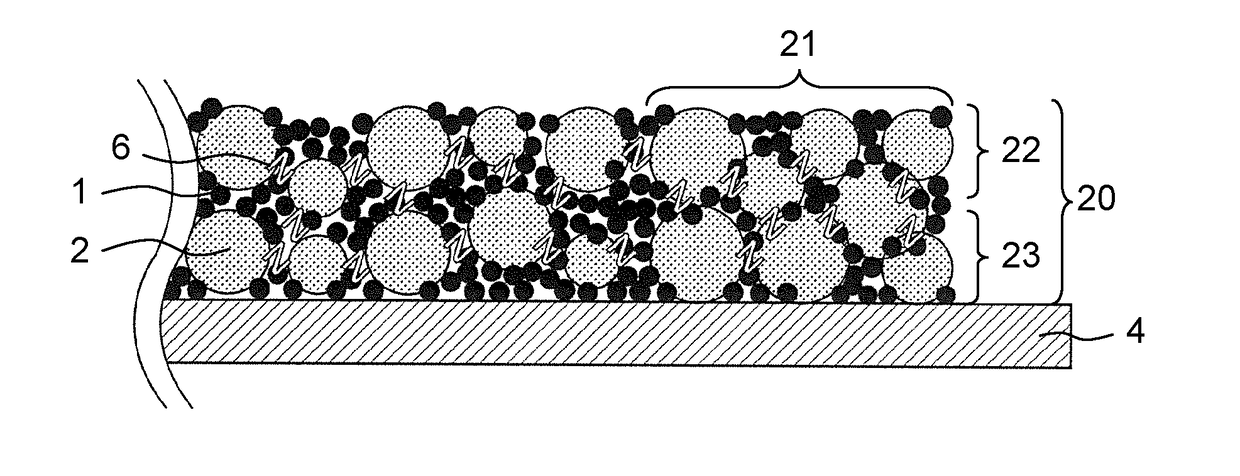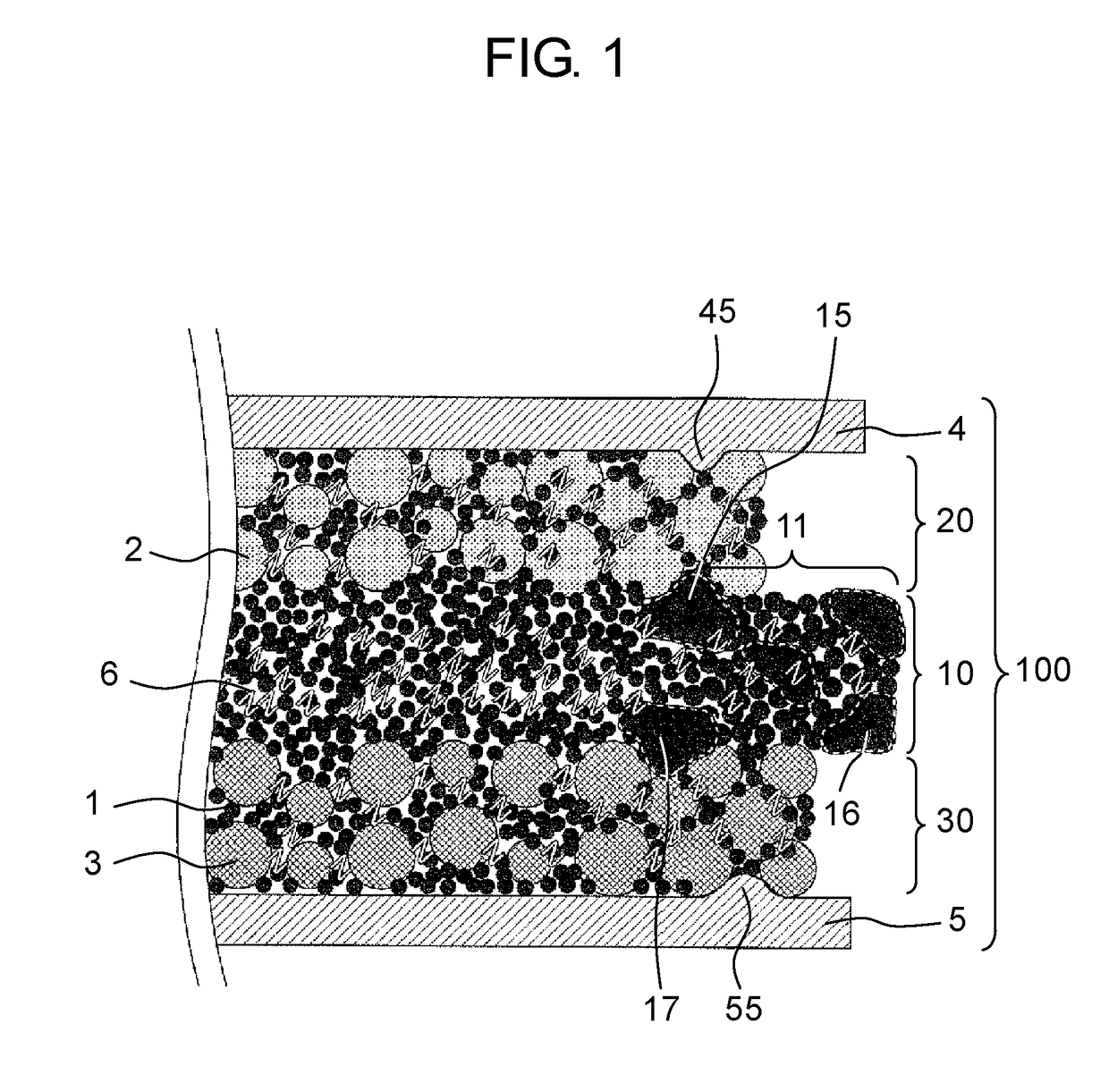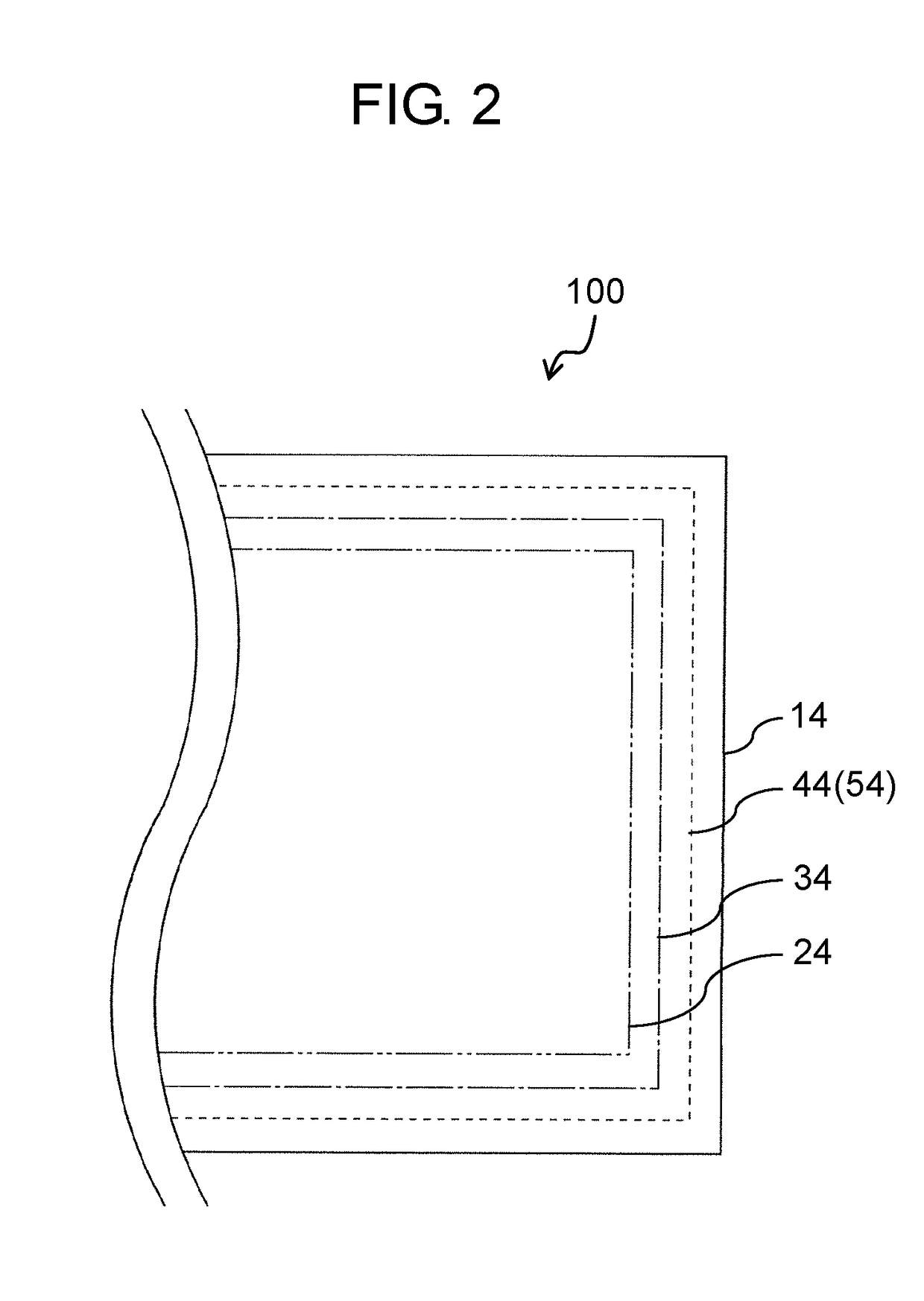All-solid-state battery and manufacturing method
- Summary
- Abstract
- Description
- Claims
- Application Information
AI Technical Summary
Benefits of technology
Problems solved by technology
Method used
Image
Examples
example 1
[0125]A Cu foil having a thickness of 75 μm was prepared as a positive-electrode current collector. 1.4 g of LiNi0.8Co0.15Al0.05O2(average particle size: 5 μm) as a positive-electrode active material and 0.6 g of CaCO3 in a glass ceramics state were prepared. These substances were pulverized by a mortar and were mixed. The obtained powder was referred to as a positive-electrode material mixture. The obtained positive-electrode material mixture and 0.001 g of maleic anhydride modified hydrogenated SEBS (M1913 manufactured by Asahi Kasei Corporation) were prepared. These substances were dissolved or dispersed in 2 g of a solvent, thereby a slurry of the positive-electrode material mixture was produced. At this time, the content of the maleic anhydride modified hydrogenated SEBS was 0.05% by mass with respect to the positive-electrode material mixture. Then, the obtained slurry was applied onto the positive-electrode current collector. Then, a dry treatment is performed at 100° C. for ...
example 2
[0129]A Cu foil having a thickness of 100 μm was prepared as a negative-electrode current collector. 0.8 g of graphite as a negative-electrode active material and 1.2 g of CaCO3 in a glass ceramics state were prepared. These substances were pulverized by a mortar and were mixed. The obtained powder was referred to as a negative-electrode material mixture. The obtained negative-electrode material mixture and 0.001 g of maleic anhydride modified hydrogenated SEBS (M1913 manufactured by Asahi Kasei Corporation) were prepared. These substances were dissolved or dispersed in 2 g of a solvent, thereby a slurry of the negative-electrode material mixture was produced. At this time, the content of the maleic anhydride modified hydrogenated SEBS was 0.1% by mass with respect to the negative-electrode material mixture. Then, the obtained slurry was applied onto the negative-electrode current collector. Then, a dry treatment is performed at 100° C. for 10 minutes, so as to remove the solvent. A...
PUM
 Login to View More
Login to View More Abstract
Description
Claims
Application Information
 Login to View More
Login to View More - R&D
- Intellectual Property
- Life Sciences
- Materials
- Tech Scout
- Unparalleled Data Quality
- Higher Quality Content
- 60% Fewer Hallucinations
Browse by: Latest US Patents, China's latest patents, Technical Efficacy Thesaurus, Application Domain, Technology Topic, Popular Technical Reports.
© 2025 PatSnap. All rights reserved.Legal|Privacy policy|Modern Slavery Act Transparency Statement|Sitemap|About US| Contact US: help@patsnap.com



